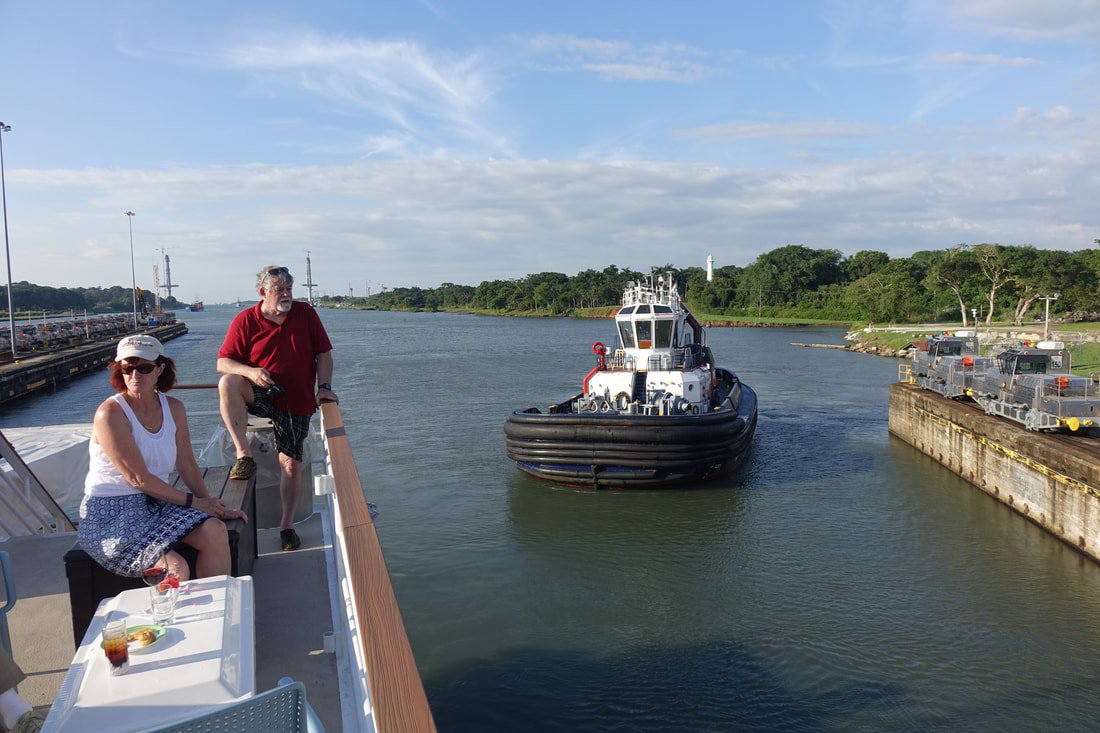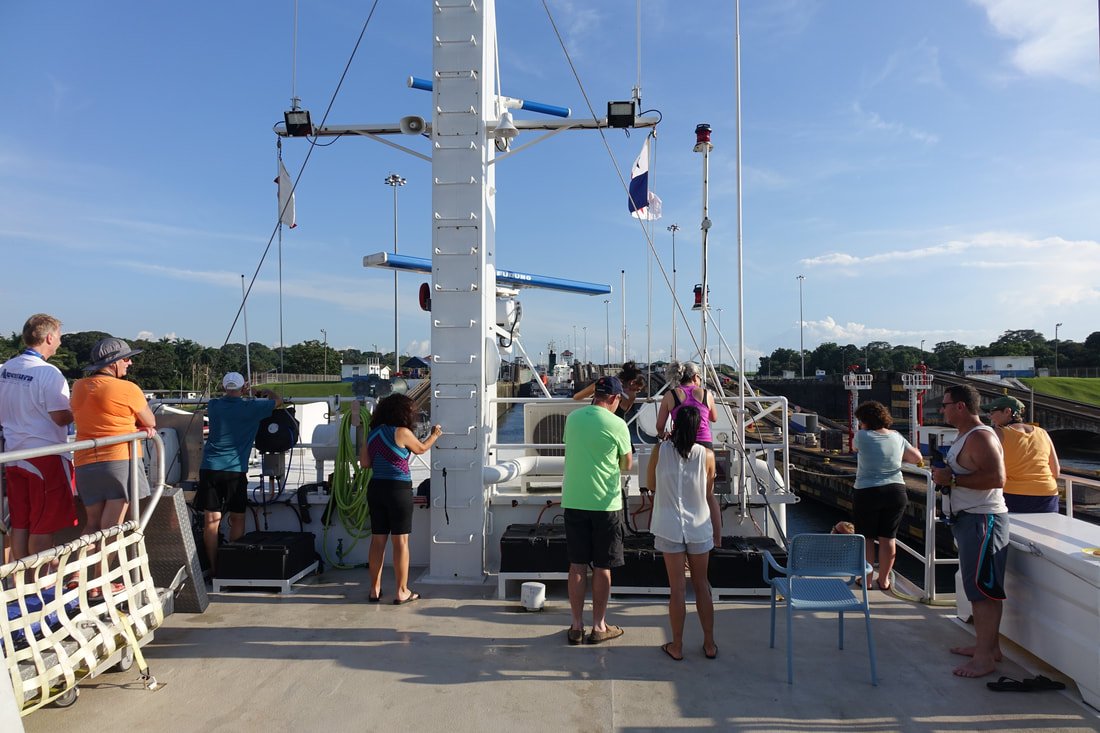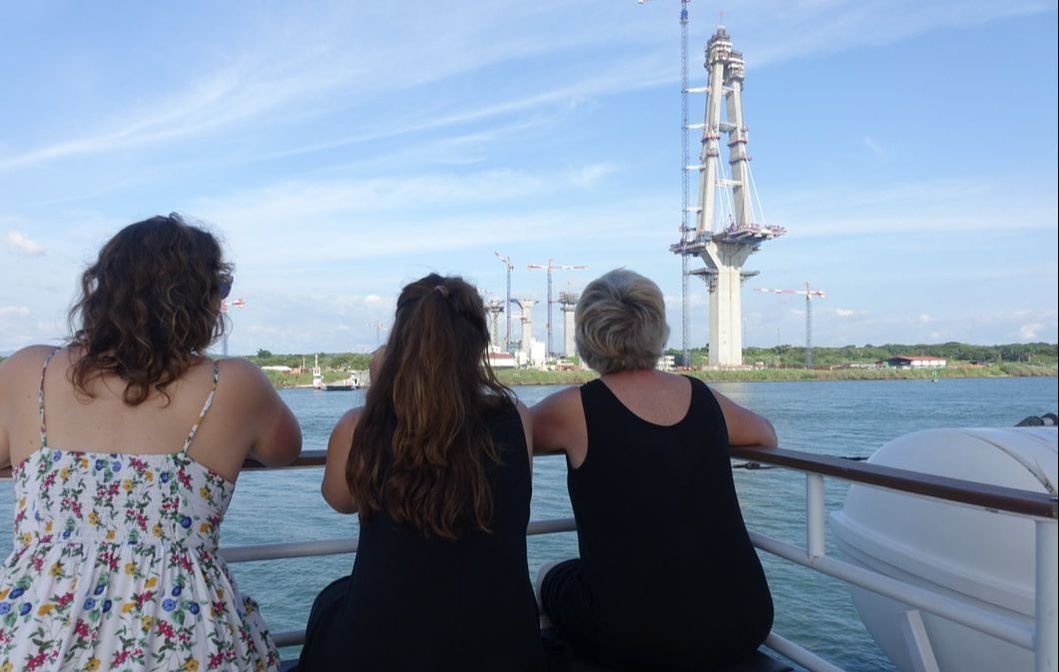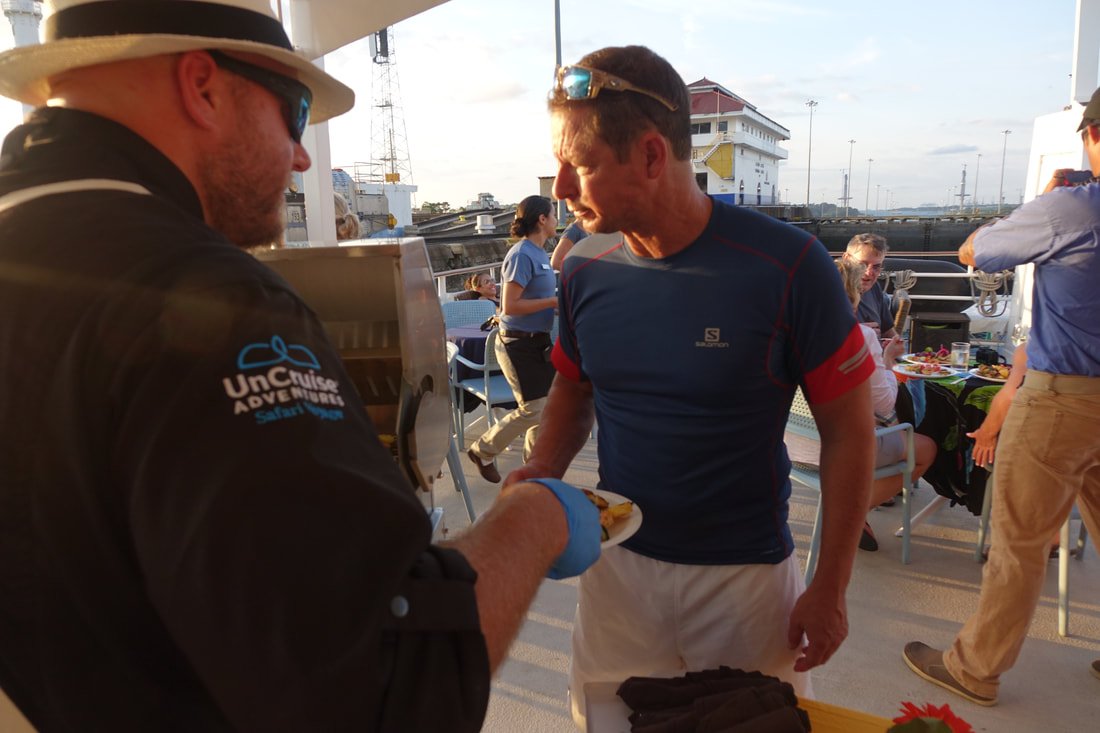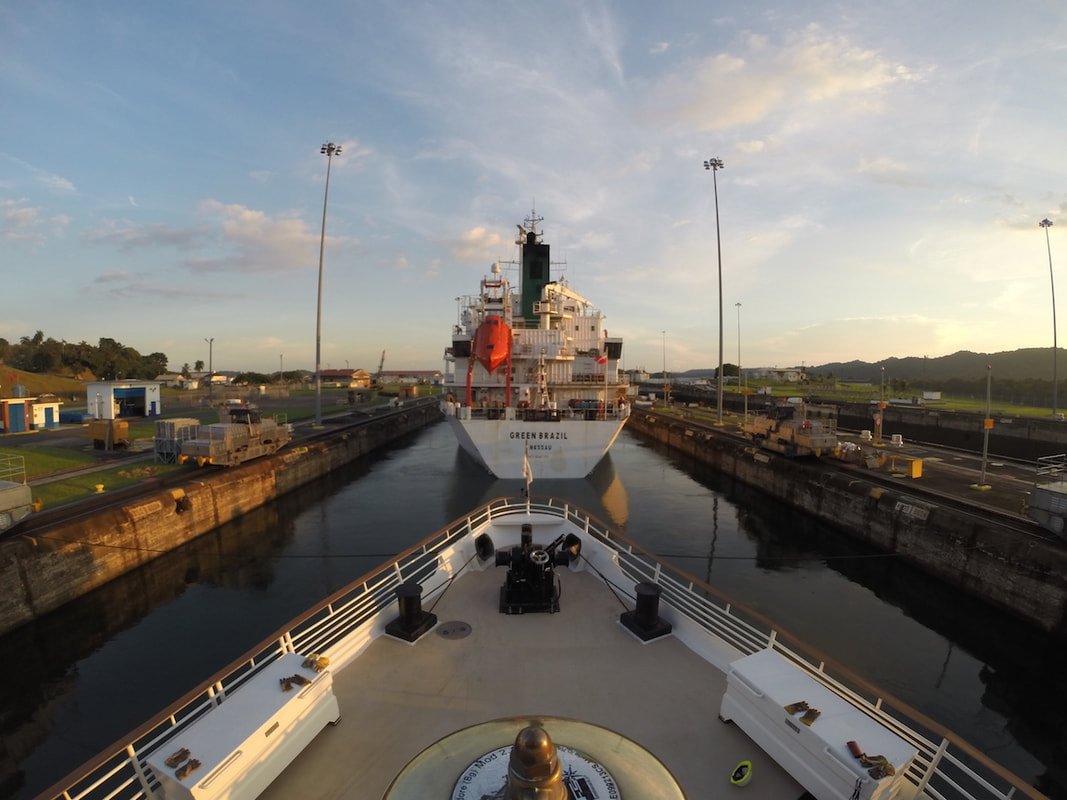6 Reasons Why a Panama Canal Cruise Is Better on a Small Ship
UnCruise Adventures' Safari Voyager enters Gatun Locks as we prepare to transit the Panama Canal.
The Panama Canal is an engineering marvel that is vital to modern commerce and shipping. The route that cuts through the isthmus of Panama has been open for more than 100 years, and its history is fascinating. A Panama Canal cruise offers so many things to enjoy, such as learning about the history and culture of the region. Plus, you can hear about the fascinating efforts, work and political maneuvering that went into building this vital waterway.
I have done this on a large cruise ship and a small expedition ship. My verdict is that it's an overwhelmingly more pleasing experience to cross the Panama Canal on a small ship. My cruise on Celebrity Infinity (2,100 passengers, 950 feet long) was enjoyable enough, with a lot of entertainment options and an overall nice program for the canal. The large ship offered a good perspective from its high decks as we transited the locks and Gatun Lake, and we also enjoyed time viewing from our balcony.
But the limitations of cruising the Panama Canal on a large ship become apparent after my recent crossing with UnCruise Adventures on Safari Voyager. During this voyage, I discovered six reasons you should cruise the Panama Canal on an expedition ship.
1. Small Ship Cruising Is Crowd-Free
Safari Voyager sails with a maximum of 62 passengers on its itineraries in Panama and Costa Rica. We had even fewer on our trip, and the lack of crowds allowed us to get a viewing spot anywhere we wanted without having to arrive to the top deck hours ahead of the transit to stake out a spot on the railing. This is how it's done on the large cruise ships that transit the canal, and you can't leave your spot without losing it to other passengers ready to pounce.
On an expedition ship, this is no problem. There are plenty of good spots for pictures for everyone, and people can move more easily from area to area, unhindered by crowds.
2. Great Views of All the Action
The small passenger count and the modest size of the vessel also means that you can go from one end of the ship to the other — and even change decks or wander to other viewing platforms — in a matter of moments so that you can enjoy views from the bow of the ship as well as perspectives off the sides and at the aft. This means you can see how the canal locks open in front then close from behind and watch the "mules" (powerful vehicles on tracks on each side) tie up ropes to your ship and work to keep you on course within the lock system.
On large ships, you pretty much have to choose your perspective for the whole process. If you want to go from aft to bow, for example, it can take a long time to walk from end to end to reach a new position.
3. You Can Have Dinner in a Lock
On Safari Voyager, the ship's chef and crew put on a top deck barbecue for us so that we wouldn't miss a thing while we were transiting the canal. Passengers ate grilled shrimp and other fine cuisine while drinking sangria and cocktails served right outside under sunny skies. It was amazing to be eating our dinner right inside a Panama Canal lock during the whole process.
4. The Captain Readily Interacts with Passengers
The bridge is off limits during the crossing as a pilot from the Canal Authority comes onboard the ship to oversee the transit. But the ship's captain will generally be accessible to passengers right up to the time we enter the canal and will gladly explain what is going to happen. Our fellow cruisers on Safari Voyager peppered Captain Kamin Lambertson with questions throughout the day of the crossing to find out how many times he had done this, how long it would take, how much it costs, etc.
Expedition ships generally have an open-bridge policy, and the captains will welcome you in to see how they navigate. They love to chat with passengers and answer questions, and many have a big bowl of candies to offer as an incentive to come visit. They get lonely up there and love the company.
5. You Can Capture Better Pictures and Video
I was able to affix my GoPro camera to a rail just in front of the bridge to document the crossing as a time-lapse (video above). This is a fun way to save a memory from your Panama Canal crossing, and it's easy to find an unobstructed area on a small cruise ship to place your camera with good views of the journey. This is not as easy to pull off in any good way on a large ship.
6. Expedition Guides Offer Expert Narration, Info
Expedition guides give a talk about the Panama Canal, its history and the process of the crossing. They provide a play-by-play that can be heard over a loudspeaker and will also walk the decks to answer any questions. The format may be fairly informal and flexible with such a small group, and the intimate setting seems more like a classroom with all your fellow passengers. This differs from the large cruise ships, which feature an expert giving commentary over a loudspeaker that is sometimes hard to hear and will not vary from its formalized presentation.
A Panama Canal cruise is something to try at least once. You'll have fun on any type of ship, but for me, I really love that expedition ship experience. Have you done a transit? What type of ship were you on and what did you like about it?
Let us know in the comments below.
Happy travels!
JR

